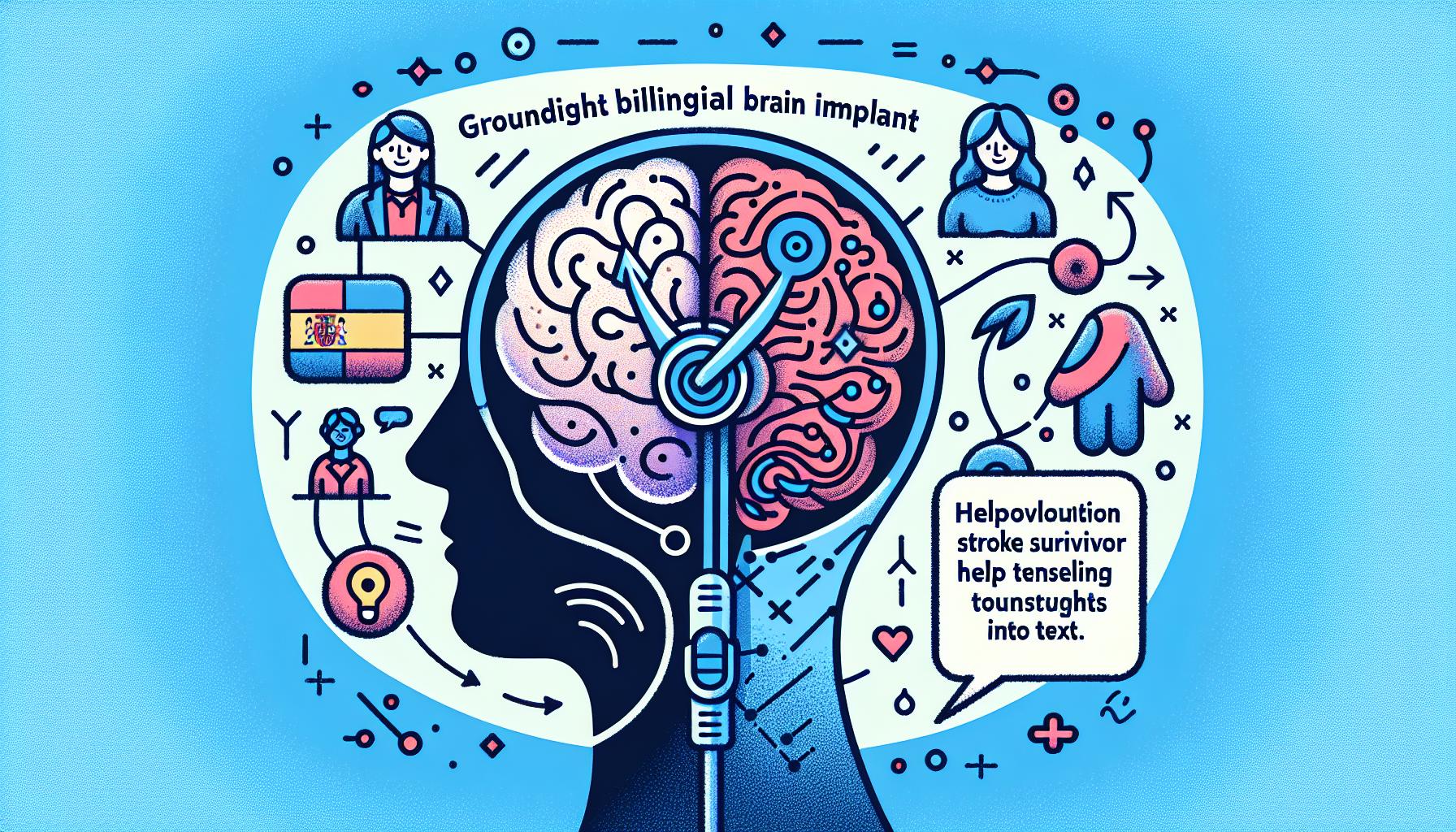Revolutionizing Communication: The First Bilingual Brain Implant Translating Thoughts into Text

Introduction
In the realm of medical science and technology, innovations often emerge that significantly enhance the quality of life for patients. One such groundbreaking advancement is the ability to translate thought patterns into text, a feat that has been particularly transformative for stroke victims who struggle with communication. While this technological leap has indeed been life-changing, recent developments have sought to address and include a critical segment of the global population: bilingual individuals.
A New Horizon in Neuroprosthesis
Researchers at the University of California, San Francisco (UCSF) have pioneered the first brain implant capable of decoding thoughts in both Spanish and English. This novel achievement, announced earlier this month, positions UCSF at the forefront of neuroprosthesis technology. The innovation is set to make a monumental impact on how we assist individuals who have lost their ability to communicate, providing a broader, more inclusive approach to medical advancements.
The Journey of Pancho: From Silence to Communication
The subject of this remarkable study is Pancho, a stroke survivor who became paralyzed at the age of 20. Although he could produce sounds, forming coherent words and sentences was beyond his capacity. In 2019, UCSF researchers implanted a chip on Pancho's cortex. This chip began recording data on how his brain activity lit up when attempting to articulate different words. The process of decoding Pancho's thoughts involved training a neural network to interpret these signals through a method mirroring the brain's natural language-learning processes. Initially, this allowed Pancho to communicate in English—a significant milestone, albeit limited given that his native tongue is Spanish.
Breaking Barriers: Introducing Bilingual Thought Translation
Recognizing this limitation, the research team embarked on a mission to enhance the interface's capabilities to include Spanish. By retraining the neural network, they enabled the implant to translate thoughts into both languages. This advancement allowed Pancho to express himself more naturally and comfortably in his native language, reconfirming the multidimensional utility of the brain. Neurosurgeon Edward Chang, a leading figure in this research, emphasized the broader vision of their work: Our long-term goal has never been just about replacing words, but about restoring connection for people. This statement underlines the profound impact of their research on human connectivity and relational restoration.
How the Brain Implant Works
The brain implant, a small chip placed on the cortex, works by detecting electrical activity produced when Pancho attempts to form words. This data is then fed into a neural network, a type of Artificial Intelligence designed to mimic the brain's natural learning processes. Over time, the A.I. learns to interpret the patterns of brain activity associated with specific words, effectively translating Pancho's thoughts into text. When the researchers decided to enable bilingual translation, they had to train the neural network to recognize and differentiate the unique patterns associated with both Spanish and English words. This involved exposing the A.I. to a variety of brain activity data linked to both languages, allowing it to learn and adapt in much the same way a human brain does when learning multiple languages.
Why This Discovery Matters
The decoding of Pancho's Spanish-language thoughts tapped into neural regions also used for his English-language skills. This crossover suggests that our brains might not separate languages as distinctly as once thought, utilizing shared cognitive pathways for multilingual processing. Future research aims to expand the scope of neuroprosthesis, with a goal to help more patients regain their ability to communicate effectively. The implications extend beyond stroke victims, potentially offering hope to those affected by a range of neurological conditions. This pioneering effort highlights not only the strides being made in medical technology but also the potential for inclusive advancements that consider the linguistic diversity of the global population.
The Broader Impact and Future Applications
As the technology behind the brain implant continues to evolve, its potential applications could extend far beyond the current usage. Researchers are already envisioning a future where this technology can aid individuals with various neurological conditions, such as ALS (Amyotrophic Lateral Sclerosis) or spinal cord injuries, in expressing their thoughts and communicating with others. Furthermore, the success of bilingual thought translation opens up intriguing possibilities for multilingual communication in general. Imagine a world where language barriers are effortlessly bridged by AI-powered brain implants, allowing people to communicate seamlessly regardless of their native languages. Such a reality could revolutionize not only the medical field but also global communication and collaboration.
Conclusion
This pioneering effort by UCSF researchers highlights not only the strides being made in medical technology but also the potential for inclusive advancements that consider the linguistic diversity of the global population. In a world where nearly half of the population speaks multiple languages, this bilingual brain implant stands as a testament to the seamless integration of Artificial Intelligence and human resilience, paving the way for a more connected and communicative future. As this field progresses, the promise of reclaiming the fundamental human ability to communicate continues to inspire hope and innovation.

